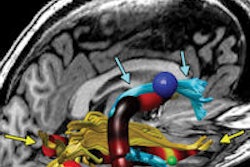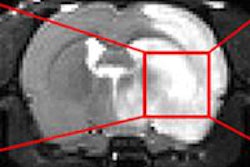The University of Chicago's Giger Lab has been developing quantitative image analysis methods for breast MRI CAD technology for decades; these tumor features that are automatically extracted from breast MRI studies are used in CAD, but they can also be considered as phenotypes in characterizing tumors, according to presenter Maryellen Giger, PhD.
"Thus, our CAD workstation is actually a high-throughput MRI phenotyping system for characterizing breast cancer subtypes," she said.
In collaboration with various radiologists within the U.S. National Cancer Institute's (NCI) Cancer Imaging Archive, the researchers have been analyzing MRI scans of breast cancer that correspond with the various clinical/histopathologic/genomic data within NCI's Cancer Genome Atlas. This talk will share the results from the investigation into the role of MRI-based phenotypes for predicting the molecular classification of breast cancers.
The use of computer-extracted tumor phenotypes yielded area under the curve (AUC) values of 0.89, 0.69, 0.65, and 0.67 in the tasks of distinguishing estrogen receptor (ER)-negative status versus ER-positive, progesterone receptor (PR)-negative status versus PR-positive, HER2-negative status versus HER2-positive, and triple-negative status versus all others, respectively, the group found.
"Our analyses indicated that ER-negative cases tend to be more irregular in shape with a slightly ill-defined margin than those of ER-positive cases," Giger told AuntMinnie.com. "The ER-negative breast cancers also tended to be larger with a more heterogeneous enhancement pattern than the ER-positive breast cancers. We also found that triple-negative lesions tended to be larger, with a more irregular shape and a more heterogeneous enhancement pattern than the other lesions."
The results indicate that high-throughput MRI phenotyping of breast cancers shows promise in contributing to the discrimination of breast cancer subtypes, Giger said.
"We are currently conducting further investigations by merging the MRI phenotypes with corresponding genomic data, with the goal of yielding improved prognostic predictors to potentially guide targeted therapies in precision medicine as well as contribute to the data mining of breast cancer data, including MRI, clinical, histopathology, and genomics in cancer discovery," she said.



















